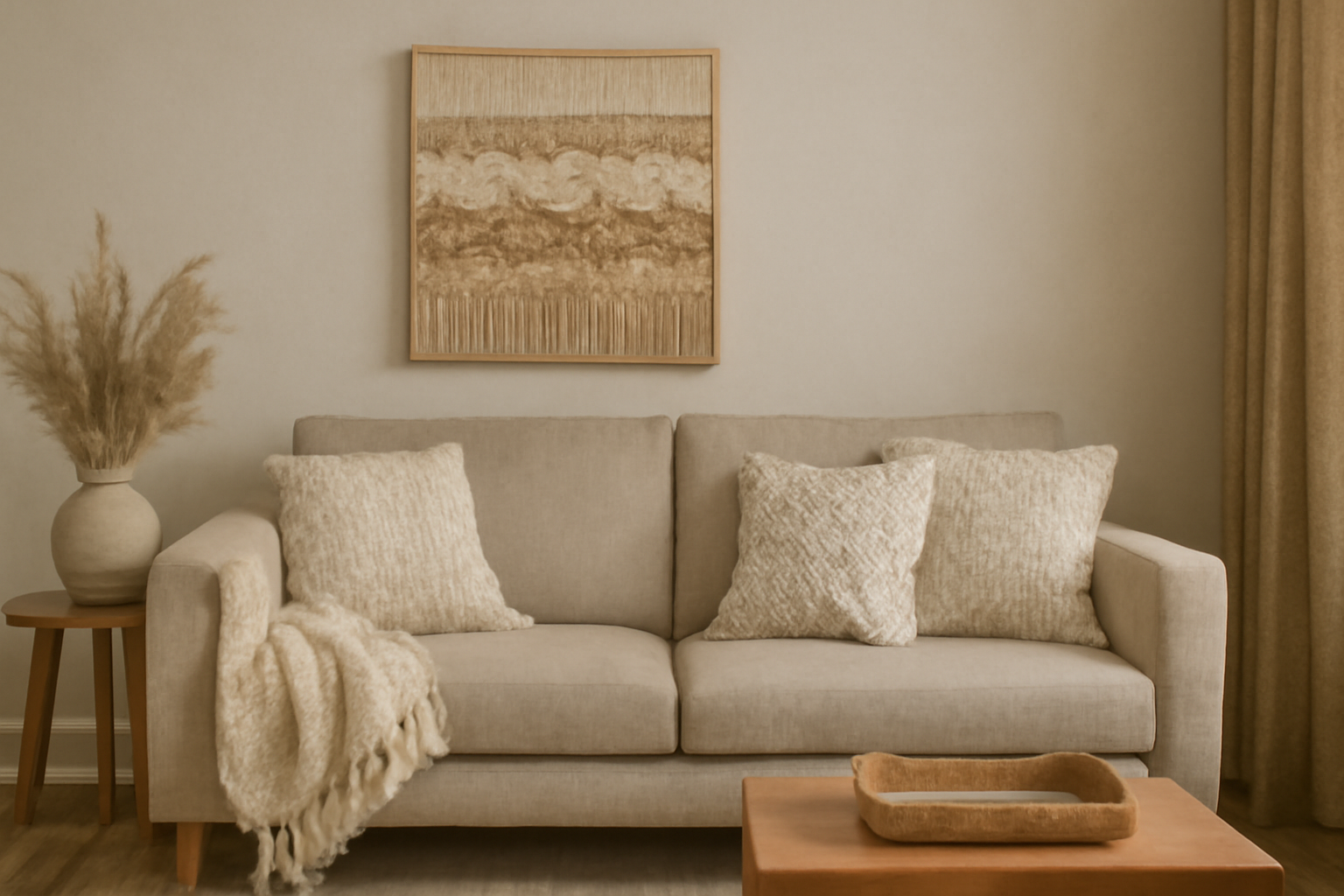Texture is one of the most powerful—yet often overlooked—elements in interior design. While color and furniture choices get most of the attention, it’s texture that makes a space feel warm, layered, and inviting. It engages the sense of touch and adds depth, creating a cozy atmosphere you’ll love coming home to.
If your space feels flat or cold, here are practical and stylish ways to add texture and warmth to every room in your home.
Layer Soft Textiles
One of the easiest ways to introduce texture is through textiles. The key is to layer different materials and finishes to create dimension.
Ideas:
- Throw blankets: Chunky knits, faux fur, wool, or woven throws instantly add softness.
- Pillows: Mix and match fabrics like velvet, linen, leather, and cotton.
- Rugs: Combine area rugs with natural textures like jute or sheepskin for added depth.
Layering doesn’t mean piling on—it means using complementary textures that work together.
Mix Natural Materials
Natural textures bring a grounded, organic feel to your home. They age beautifully and are perfect for creating a cozy, earthy vibe.
Try incorporating:
- Wood: In furniture, wall panels, picture frames, or flooring. Use reclaimed or distressed wood for a rustic feel.
- Rattan and wicker: Baskets, chairs, or light fixtures offer warmth and visual interest.
- Stone and clay: Add through vases, planters, or even small tiles.
- Leather: Adds richness in chairs, poufs, or cushions.
A combination of natural elements enhances balance and comfort.
Use Textured Wall Treatments
Your walls are a blank canvas for introducing texture beyond just paint.
Consider these options:
- Shiplap or wood paneling: Adds instant charm and depth.
- Textured wallpaper: Grasscloth, embossed, or fabric wallpaper makes a dramatic statement.
- Plaster or limewash finishes: Create a soft, organic look with movement and depth.
- Brick or faux brick: Perfect for industrial or rustic spaces.
Even a single accent wall can make a big difference in the room’s feel.
Incorporate Pattern Through Fabric and Decor
Texture isn’t just physical—it can also be visual. Patterns create implied texture that makes spaces feel richer and more dynamic.
Try using:
- Patterned textiles: Quilts, throws, or curtains with subtle weaves or prints.
- Layered bedding: Mix solids with florals, stripes, or geometrics in different materials.
- Woven wall hangings or tapestries: These add both pattern and softness to a room.
Mix patterns with care—stick to a common color palette and vary the scale to avoid clashing.
Add Greenery and Organic Shapes
Plants not only bring life to a room but also add texture through their varied leaves and forms.
Suggestions:
- Use a variety of plants (bushy, spiky, trailing) for natural contrast.
- Place them in woven baskets, ceramic pots, or textured planters.
- Dried arrangements (like pampas grass or eucalyptus) also introduce softness and movement.
Organic shapes—curved furniture, irregular vases, asymmetrical bowls—add a tactile, cozy dimension as well.
Play with Light and Shadow
Lighting can influence how texture is perceived. The right lighting will highlight surfaces and add mood.
Tips:
- Use lampshades with linen or burlap finishes for extra visual interest.
- Incorporate dim lighting to create cozy corners and enhance shadow play.
- Wall sconces or spotlights can accentuate textured surfaces like stone or paneling.
The interaction of light with textured materials adds subtle depth and richness.
Use Art and Sculptural Decor
Go beyond flat, framed artwork—opt for pieces that have depth or dimension.
Ideas:
- Shadow boxes with layered elements
- 3D wall art, like metal or wood sculptures
- Framed textiles or macramé pieces
- Ceramic or terracotta sculptures for shelves and mantels
Tactile art pieces invite curiosity and make your home feel more intimate and lived-in.
Upgrade Everyday Objects
Even practical elements can contribute to the overall texture of your space.
Try switching out:
- Lamps and light fixtures to styles with woven or hammered finishes
- Storage baskets from plastic to seagrass or fabric-lined bins
- Hardware and knobs to matte or brushed metal finishes
- Curtains and drapes to heavier, natural fabrics like linen or velvet
The goal is to look beyond aesthetics and consider how each object feels in the space.
Combine Glossy and Matte Finishes
Contrasting finishes create a visual push-and-pull that adds interest.
Pair:
- A matte wall with a glossy tile backsplash
- A shiny metal lamp with a rough concrete base
- Polished countertops with wooden bar stools
This contrast enhances the perception of texture and makes spaces feel more layered and luxurious.
Keep It Balanced
While texture is essential, too much can make a room feel overwhelming or cluttered.
To maintain balance:
- Vary your textures but repeat certain materials for cohesion.
- Use a consistent color palette so the eye isn’t overwhelmed.
- Leave some smooth, simple surfaces to let textures stand out.
Balance is the key to making texture feel intentional—not chaotic.
Cozy, Layered, and Inviting
When used thoughtfully, texture can turn a flat, lifeless room into a warm, welcoming sanctuary. By layering fabrics, mixing materials, and playing with light, you’ll create a home that’s not only beautiful but also comfortable and full of personality.
You don’t need to overhaul your entire decor—just start adding texture one layer at a time.
